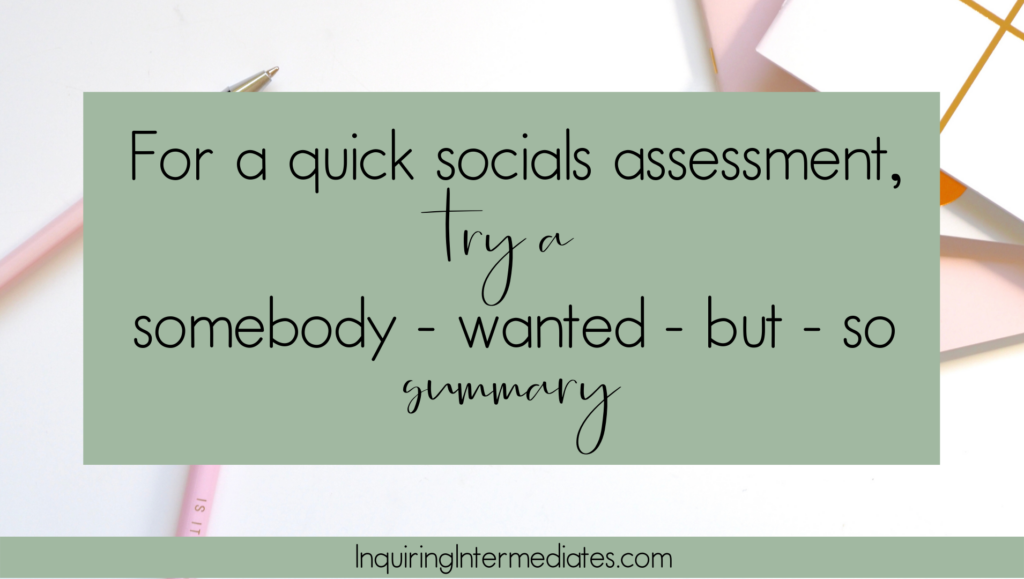Grade 5 social studies is one of my favourite subjects to teach, but would you believe it was one of my least favourite subjects as a student? Well, 99% of the time I was in an elementary social studies class, we were reading a textbook and answering questions about it. I love reading, but even I found that boring! Reading comprehension is not what social studies is about.
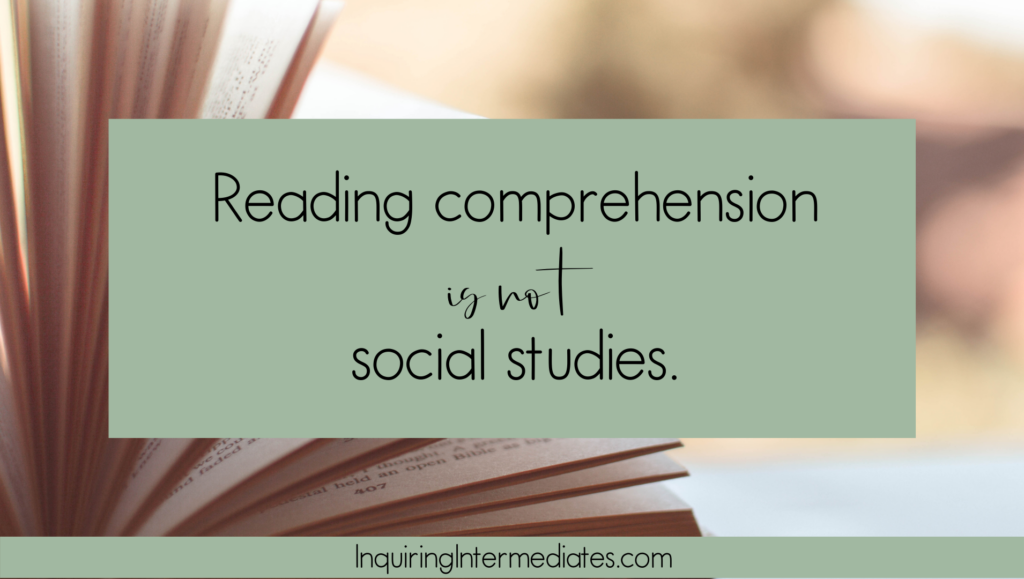
What is social studies?
- Perspective-taking
- Understanding of how history has shaped our present
- Research skills, fact-checking, and synthesizing information
- Knowledge of how our government works
- Using what we have learned to make ethical judgements about particular events
- Equipping students with the tools to work toward positive change
- Geography skills
If our grade 5 social studies lessons don’t include these competencies, what are we actually teaching? Here are 19 activities you can use in your grade 5 social studies class that require at least one of these competencies.
Role-Play in Grade 5 Social Studies
Role-play can be a great way for students to engage meaningfully with grade 5 social studies concepts and demonstrate their understanding. It can also be a powerful tool to help students stretch their social justice thinking and practice advocating for themselves and others.
I try to do role-playing in my grade 5 social studies class in a way that is loosely based on Augosto Boal’s Theatre of the Oppressed. Essentially, a few students begin to role-play a situation with a social justice issue. The other students, who Boal calls “spect-actors”, jump in to try and solve the problem in an equitable and realistic way.
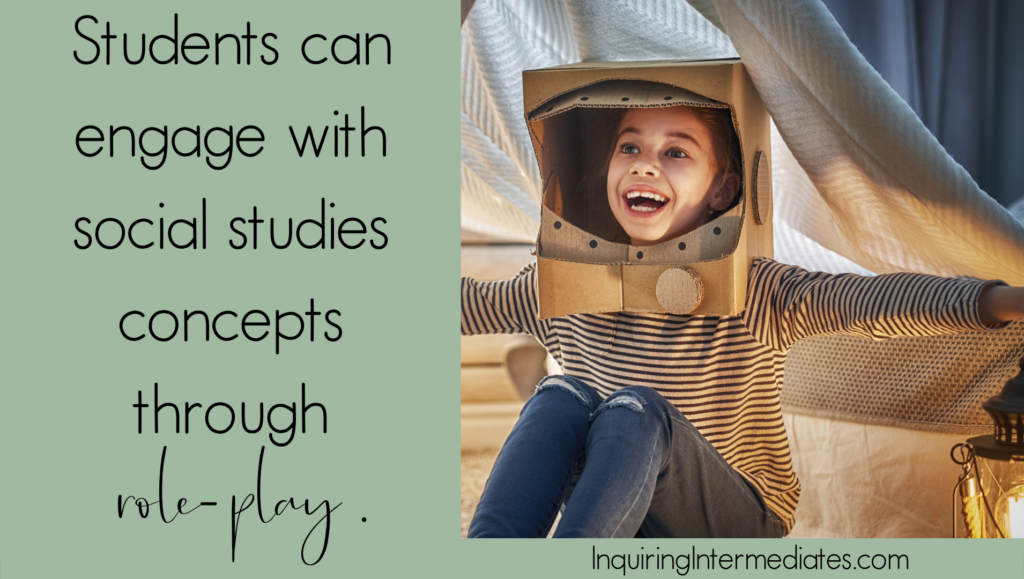
Here are some examples of role-playing tasks you might use:
- A sighted student is walking down the hall when a blind student asks them for directions to the nearest bathroom. The sighted student points in the direction of the bathroom and says, “over there”.
- Pretend you are in the classroom and your teacher tells a friend with ADHD to “sit still and just pay attention”.
- Pretend you are a white theatre-goer who was in the theatre when Viola Desmond was arrested. Retell the story to a friend (the theatregoers, as far as we know, did not stand up for Desmond).
Simulations and Games for Elementary Social Studies
Let me say one thing up front: I don’t think we should be running a simulation for the sake of showing how terrible an event was. Kids don’t need to pretend they are in a slave ship to know that enslavement is terrible. There are some grade 5 social studies concepts that do provide great contexts for simulations, though. Here are a few:
- Trading game: Divide students into nations and give them little cards that represent that nation’s resources. Have them trade with one another without using spoken language. At the end of the game, have everyone reflect on the kinds of trades they made and how ‘far’ different items travelled.
- Mock trials (but let’s not run trials for people like Columbus, OK? We all know he was guilty, guilty, guilty).
- Mapmaking (ex. visit a new park and try your hand at drawing an accurate map of the area between the school and the park)
- Mock governments and elections (see below)
- Archeology (keep reading!)
How to Teach Government in Grade 5 Social Studies
Mock Election or Student Vote
What better way to learn about government than by setting up one of your own? Let students run for positions in a class government and then run a mock election. Make the stakes higher by letting the elected government plan a day or week in your class (within parameters, of course).
If you’re in Canada, check out Student Vote and their phenomenal resources. They offer lesson plans, fantastic social studies videos, and official-looking mock election materials for municipal, provincial, and federal elections. They even send those cool little “I Voted” stickers! The ‘real’ ballots and boxes add a lot of excitement to the process.
Create a New Law
Give your students roles to play and have them draft and pass a law. It can be a serious law or a pretend one; the goal is to focus on the process of creating a law rather than the law itself. Once they’ve drafted several laws, get them to work together to vote on one or two to really engage with. Have students pretend they’re MPs and have them take the law through imaginary readings in the House of Commons! You can take it one step further by sending their law to the Senate, which might be a group of staff members or another class.
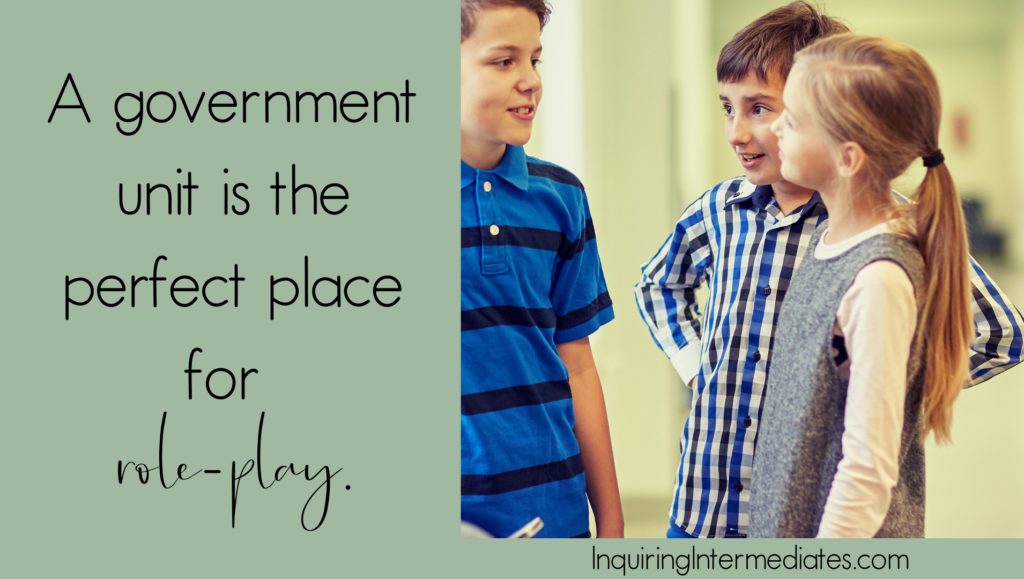
Fake Archeological Digs
At the beginning of the year, I like to teach about the different ways we can learn about the past. Students are often totally fascinated by archeology, and it seems like there is always someone who decides to become an archeologist after I teach about it. If you have a sand box, sandpit, empty flower box, or access a sand table, consider burying some things and having your students play archeologist as they excavate them! They can try to think like an archeologist and imagine what the historical significance of the items might be.
Primary Source Analyses in Grade 5 Social Studies
I love, love, love primary source analyses! Some people are hesitant to move away from tertiary sources in elementary school, but fifth grade is NOT too young to engage in primary sources. For a successful interaction with a primary source text in a grade 5 social studies class, you will need:
- A good understanding of the context
- Discussion
- Small chunks of text
- A few carefully chosen vocabulary words
- Square brackets and ellipses to rephrase and chop out words and sections that don’t work for your group
Two ways to approach primary sources:
- Read as a class, assess based on discussions.
- Stations
I like to let students work with their peers and rotate at their own pace. Sometimes I ask them to visit a minimum number of stations, but sometimes I tell them to just take the time they need and not worry about how many they get done. Instead of having specific questions for them to answer at these stations, I try to get them to think more generally. For example:
- Was Joseph Howe for or against Canadian confederation? How do you know?
- Give some examples of how Indigenous families fought back against Indian Residential Schools*
*FNESC (First Nations Educational Steering Committee) has tons of primary resources and lesson plans you can use to teach about Indian Residential Schools in Canada in grade 5 social studies as well as grade 10.
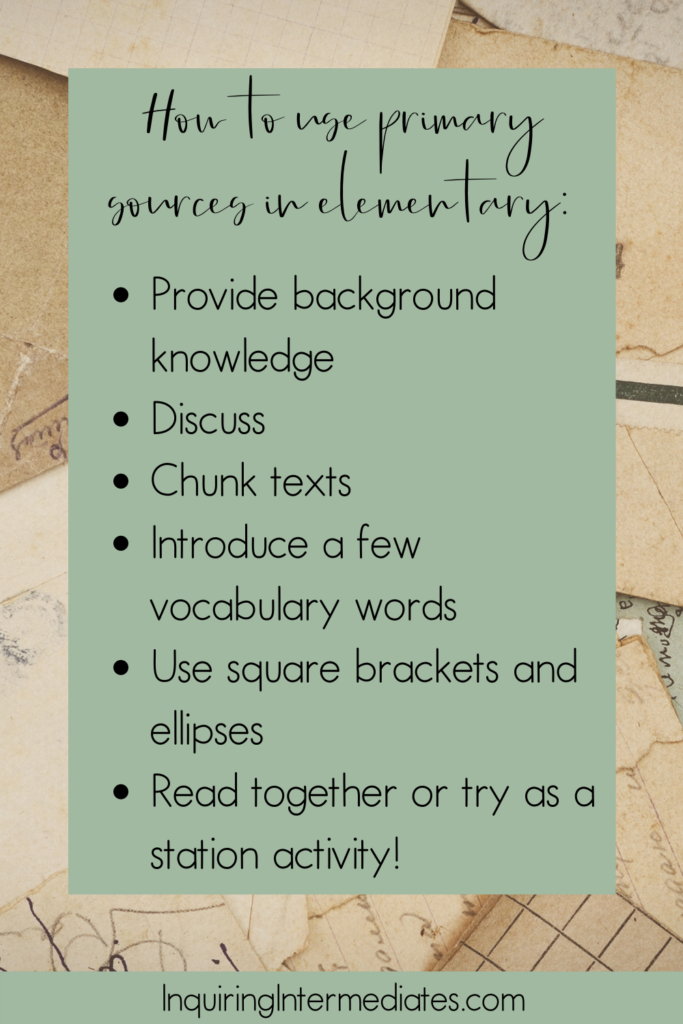
Image Analysis
A picture is worth a thousand words, right? Show students images of a particular time or event and have them analyse it. Some guiding questions might be:
- Who do you see? (we’re not looking for names here as much as we are looking for groups of people who are represented)
- Who do you not see?
- What is happening?
- Why would the photographer take this photo?
- What message is the creator trying to get across?
- What do you wonder?
- Can you make any connections?
- Does this fit in with anything you know?
- What surprises you?
Canadian Social Studies Videos for Kids
Canadian teachers: Take a look at Historica Canada’s youtube channel! They have tons of Heritage Minutes and other neat videos you can easily use as a hook for a lesson. Not all their videos are a minute long, and the newer Heritage Minutes seem a lot better than the ones I used to see on TV as a kid. The National Film Board of Canada also has lots of interesting documentaries and films. A lot of them are quite long, but you can show your students portions of them. If you’re in the States, check out PBS for educational content.
Canadian Social Studies Podcasts
Podcasts are such a great way to introduce new material! Kids love how they can draw or doodle as they listen. You can even try getting them to create their own doodle notes! The Secret Life of Canada is my favourite Canadian history podcast. Lots of the episodes have **bad words** that aren’t appropriate for a grade 5 social studies class, so definitely make a point to listen to them ahead of time and select sections you can play at school. They offer teaching guides for select episodes that seem promising for older students. They also have teeny-tiny podcasts called Shout Outs, which introduce neat people from Canadian history. I’ve listened to most of them so far, and they all seem appropriate for grade 5 social studies.
Social Studies Picture Book Read Alouds or Historical Fiction Novel Studies
Who doesn’t love a good picture book? With time for discussion, a picture book can be an incredibly powerful tool for a social studies lesson. Check out my list of Picture Books for Black History Month in Canada for some suggestions!
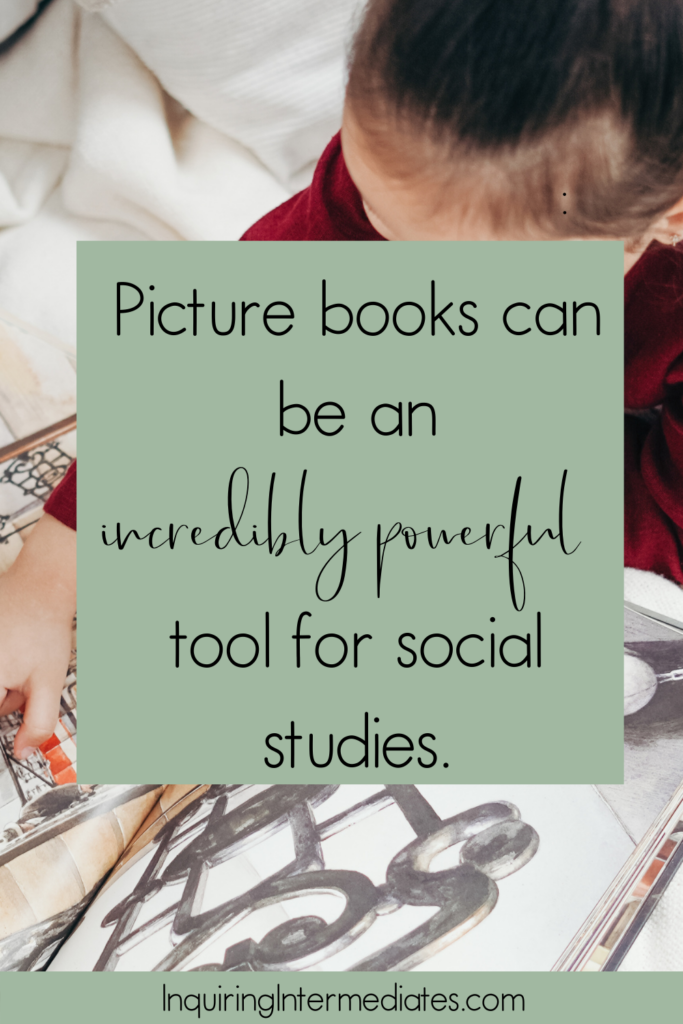
Using Timelines in Grade 5 Social Studies
The ability to put things in timeline order is an important competency for grade 5 social studies. There are so many great ways to use them:
- A giant beaded timeline that shows the history of your country makes a great visual for your first social studies class (I have instructions for a Canadian/Turtle Island one here)
- A quick three-event timeline can be assigned as a summarization tool after a book, podcast, or documentary
- Combine geography and timelining by having students draw a timeline on a map showing movement over time (ex. Terry Fox’s route, trade patterns during the fur trade, the construction of the CPR…)
- A timeline that students add to all year or throughout a unit as they learn about different historical events
- A timeline that students create at the end of the year or the end of a unit. Have them explain why they feel the events they chose are most significant.
- Cause-and-effect branch-off timelines.
- Students create timelines that branch off in several different directions, showing how one event caused others. Encourage them to make connections between branches.
Virtual Field Trips for Elementary Social Studies
Virtual field trips are so much fun! If you’re learning about a new area or telling stories from a different place, consider taking a virtual field trip to that place first. All you need are a couple of youtube videos and maybe some images. Check back, because I’ll be posting some ideas for how to add extra **magic** to your virtual field trips soon!
Social Studies Stations
Stations are one of my favourite social studies tools. I love combining them with primary source analyses. They’re also a great activity when you don’t have a class set of the materials you’re using. For example, my Acadia Learning Stations feature several videos, but you don’t need a class set of iPads to run them. Some stations have images to analyse, some have texts to read, and others have videos to watch and listen to. Check out this Instagram post to see how I ran primary source stations about Canadian Confederation!
Create an Artifact
Have students create something that represents the time period and/or event they are learning about. I do have two big notes on this though:
- This should be a project for the students, not their adults.
- If you make it an art project, you should be marking it for art!
I’m all for a cross-curricular project, but that model I made of Ramses’ Temple in sixth grade was NOT a social studies project. It was an art project that my dad and I spent way too much time and money on. And guess what? I can’t tell you a dang thing about Ramses’ Temple today. Make sure that your criteria for this assignment is super explicit and the competencies your students are using to complete the assigned task actually meet the curricular outcomes you’re trying to work on.
Think Outside the History Box
Social Studies isn’t all about history and government! It’s also about natural resources and issues of equity. When you’re planning your units, try to include some topics that the kids who ‘hate history’ can get into. Here are some examples…
Learn About Minoritized People Groups and Explore Issues of Equity
In the BC social studies curriculum for grade 5, we explore “policies and treatment of minority peoples”. When I first saw that Big Idea, I thought of racial and ethnic groups. However, there are lots of other ways that people have been and continue to be minoritized.
Last year, my students learned about the Accessible Canada Act and how it aims to make Canada a more accessible and equitable place for people with disabilities. We walked around our school and community, looking for things that made our spaces accessible or inaccessible. Students role-played disability etiquette. We watched youtube videos and listened to podcasts about spaces created specifically for people with disabilities (like Gallaudet University) and people with disabilities who have done cool things (like Ashley Fiolek)
Next year, I hope to do a unit on LGBTQ+ rights and advocacy throughout Canadian history. I know that Historica Canada has some good videos that I think would be useful. If you know of any good books, please share them in the comments!
If you’re looking to engage in discussions about social justice, be sure to equip your students with the vocabulary they’ll need! Grab this free social justice and activism word wall set!
When teaching about injustice, please try to also teach about resistance! Check back for a future blog post where I’ll link some of my favourite Canadian Social Studies resources about people groups who fought back against injustice.
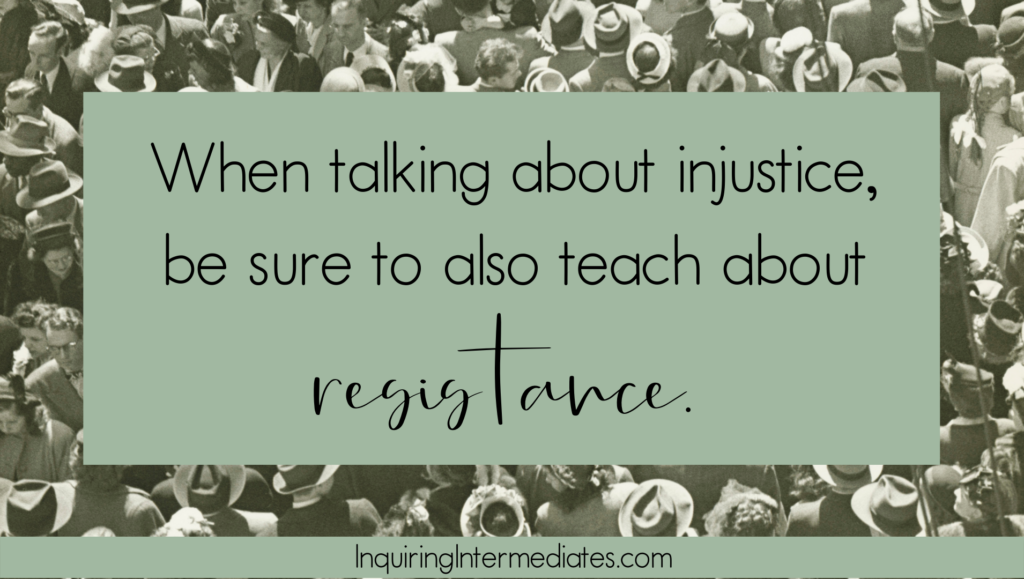
Engage Your Students with Current Events
There’s nothing more engaging than following an event in class that is unfolding in real-time. Whether it was following the arguments for and against the construction of the Site C Dam or learning about the Wet’suet’en pipeline protests, I’ve found there has always been a current story that was relevant to the BC grade 5 social studies curriculum. When we’re following current events in class, I try to use a combination of social media posts, videos, and articles to share information. The one downside is that it does require you to be really on top of things because the stories can change and develop so quickly!
Learning about current events also fits beautifully in with media literacy and learning about fact-checking strategies…
Media Literacy and Fact-Checking Strategies
Being able to find information and fact-check it is one of the most fundamental social studies competencies! When our students grow up, they won’t have social studies teachers to curate information for them. With all the information students have access to every day, they need to be able to fact-check it efficiently and accurately! I’m super concerned about the spread of misinformation and disinformation and the way it is polarizing people around the world. Media literacy and the ability to fact-check claims quickly is a tool that can fight that. As much as I love history and social justice, my media literacy unit is one that I don’t think I’ll ever go a year without.
Civix Canada, the organization that runs Student Vote, has tons of fabulous videos and online activities about media literacy, mis- and disinformation, and fact-checking for kids. They’re not Canada-specific, so anyone in an English-speaking classroom could use them. I cannot recommend their videos enough. I get students telling me about things they’ve fact-checked at home long after the unit is done.
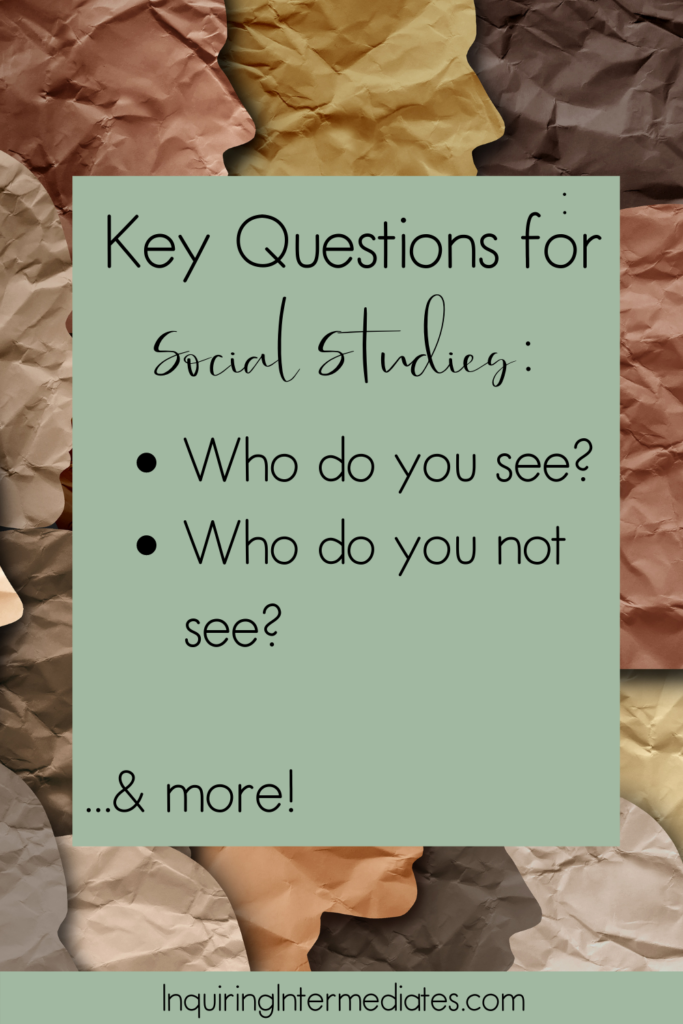
Case Studies in the Grade 5 Social Studies Classroom
There are so many interesting ways you can use case studies in your classroom! You can use them to juxtapose historical and contemporary events (for example, the 1990 Oka Crisis/Kanasetake Resistance and the protests in solidarity with the Wet’suwet’en hereditary chiefs). You can also use case studies for social justice topics, like this set of Equity and Equality Case Studies. These case studies require students to imagine equitable outcomes for smaller, everyday social justice issues that your students will experience in their classrooms.

Social Activism for Kids
At the end of the day, knowing about history, politics, and social justice does us no good if we don’t use what we have learned to make the world a more equitable place. Encourage your students to look for causes they are passionate about and ways they can make a difference. If you can, arrange to video chat with local activists who are engaged with causes your students are interested in.
It’s so interesting to see what different groups are passionate about year-to-year. Here are some of the things my students have done as little activists over the past few years:
- Written letters to the school board with suggestions for how we might make the buildings more environmentally-friendly
- Written letters to our local and federal government with their suggestions of what the budgets should prioritize
- Sewed tiny owls and sold them alongside baked goods to raise money for the Nature Conservancy of Canada
- Created a petition and tried to get the government to protect spotted owl habitats. I was even able to take some of them to a strip mall near our school during lunch so they could collect signatures from shoppers. It was such an empowering experience for them! They were also excited to learn that there was no minimum age to sign a petition in Canada. They worked that playground hard at recess and lunch to collect signatures! Some of them even took clipboards to their soccer practices to try and get their teammates’ signatures.
- Collecting pads and tampons to make period care kits for a local shelter.
Truthfully, some of these are more charity than activism, but I think it’s a decent start for a grade 5 social studies class. Older students could even work on creating social media posts, articles, or blogs that share information about a topic of their concern. They could also organize a protest, demonstration, or installation of some sort!
My favourite quick grade 5 social studies assessment…
Last but not least, here’s a strategy you can use to check understanding of virtually any story-based lesson: a somebody-wanted-but-so summary! It’s a great way to see whether students understand who the key players are and whether they get cause and consequence (aka cause and effect). I love hearing all the different ones that students come up with from a particular lesson; it really shows what resonated with them!
How do you feel about teaching social studies? Do you love it, hate it, or fall somewhere in between? What are some of your go-to social studies activities or tools? Share your thoughts in the comments!
